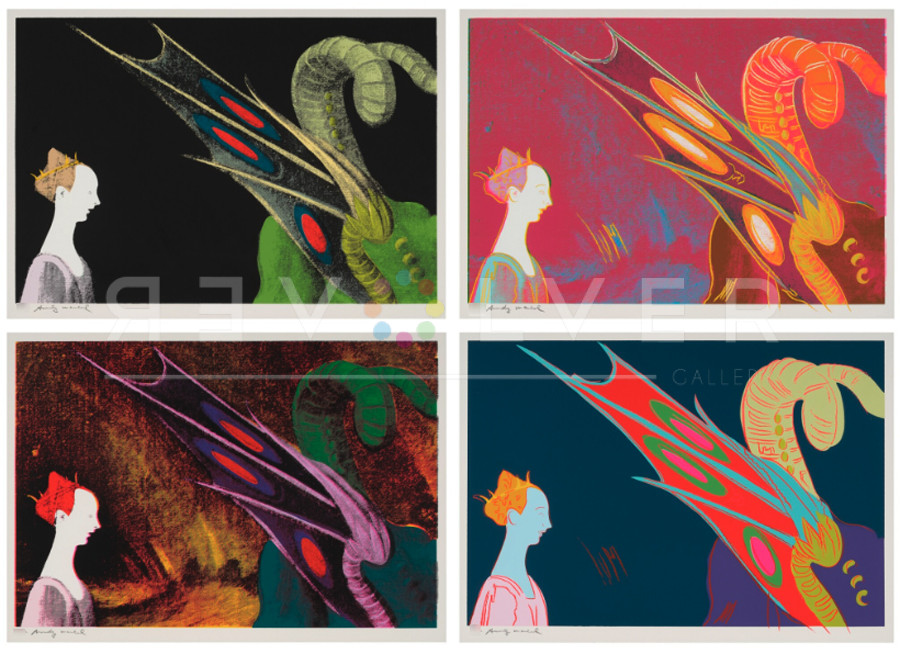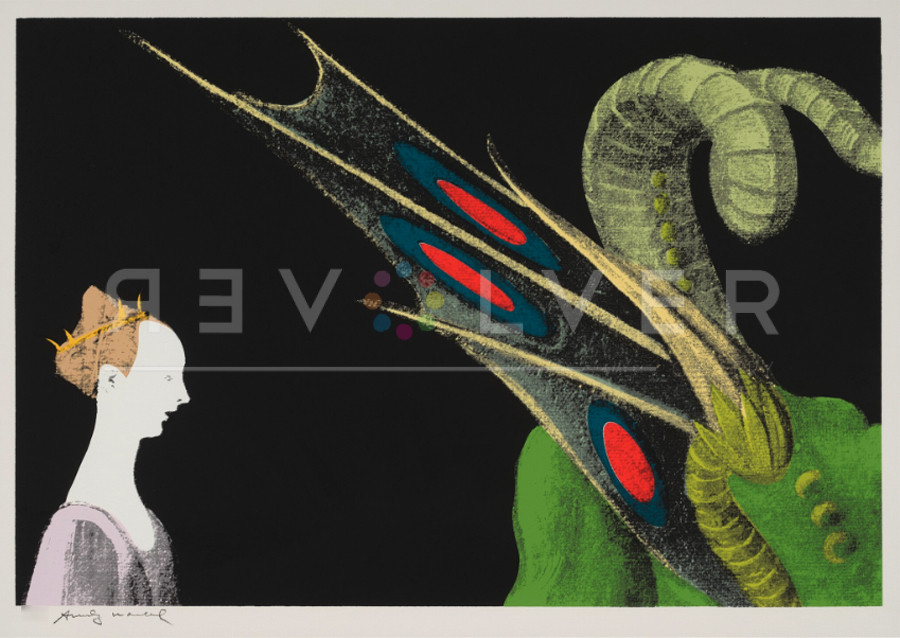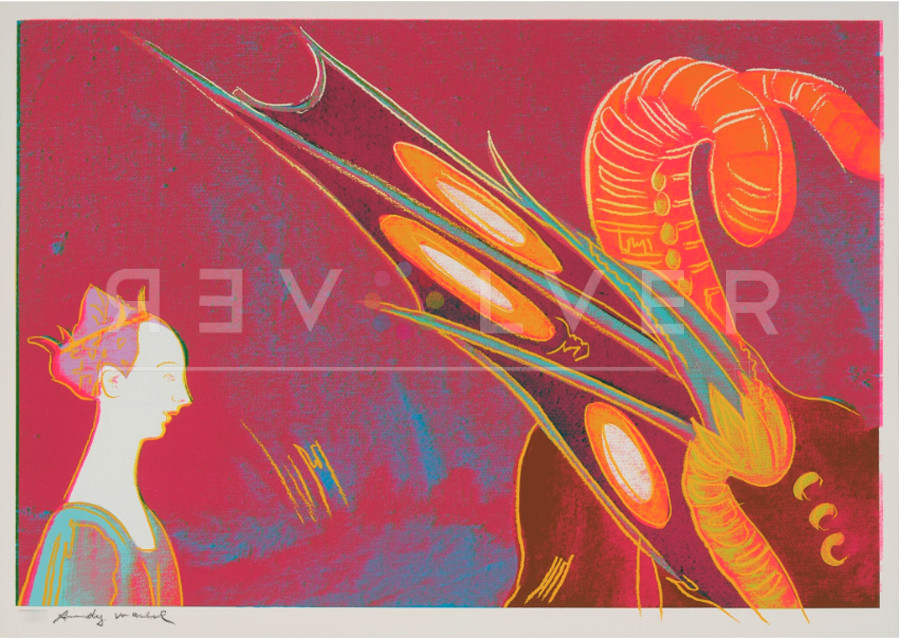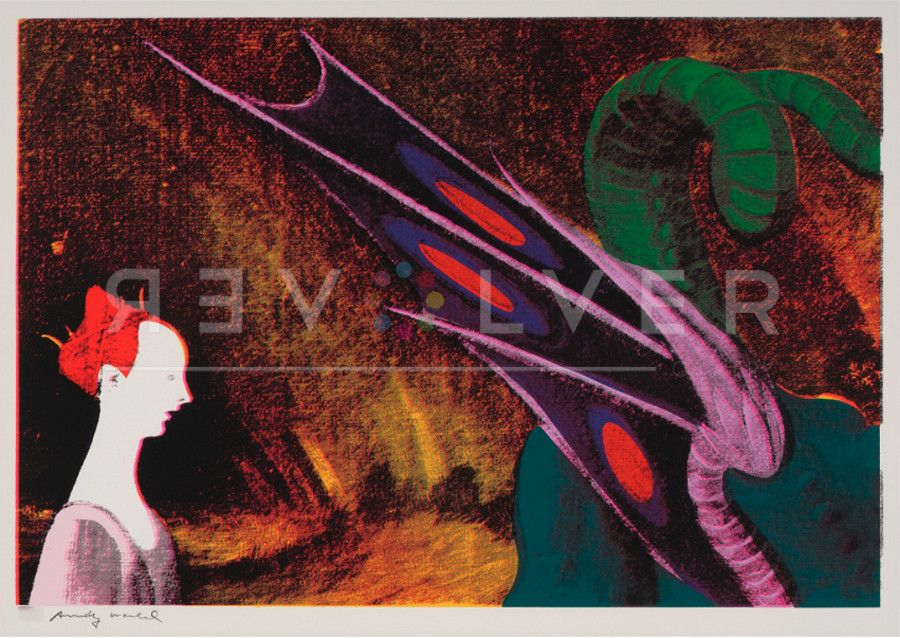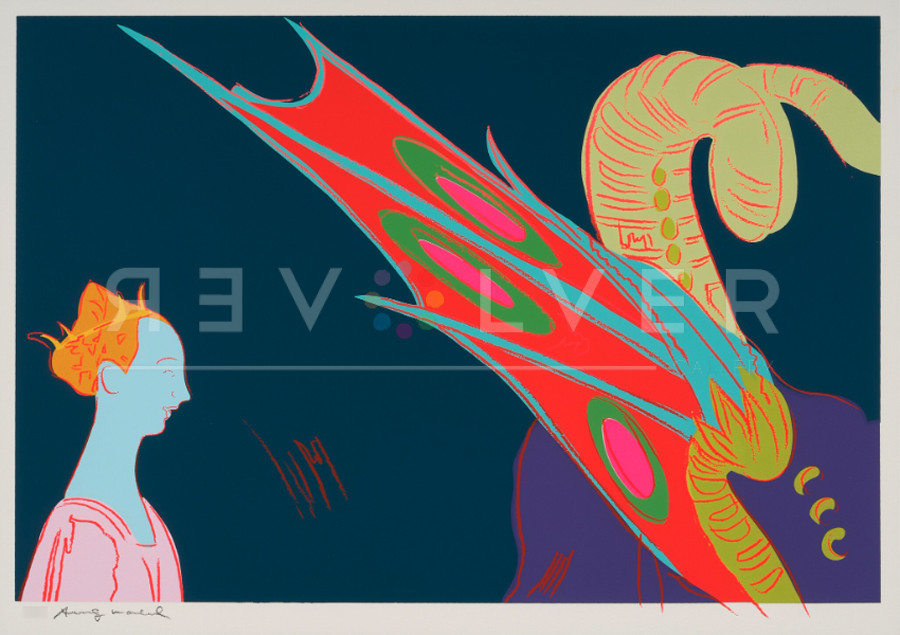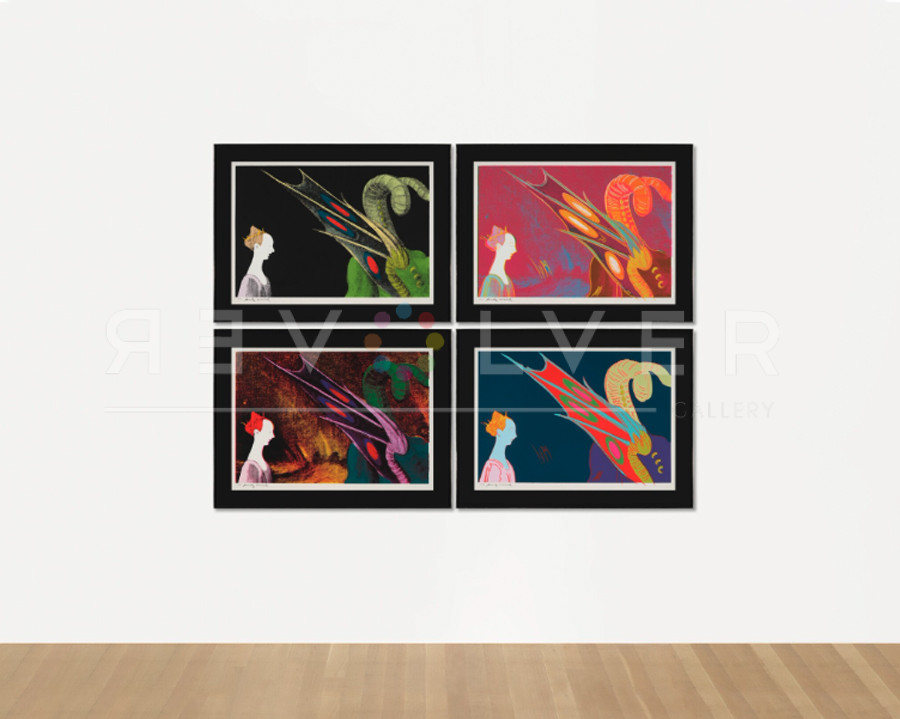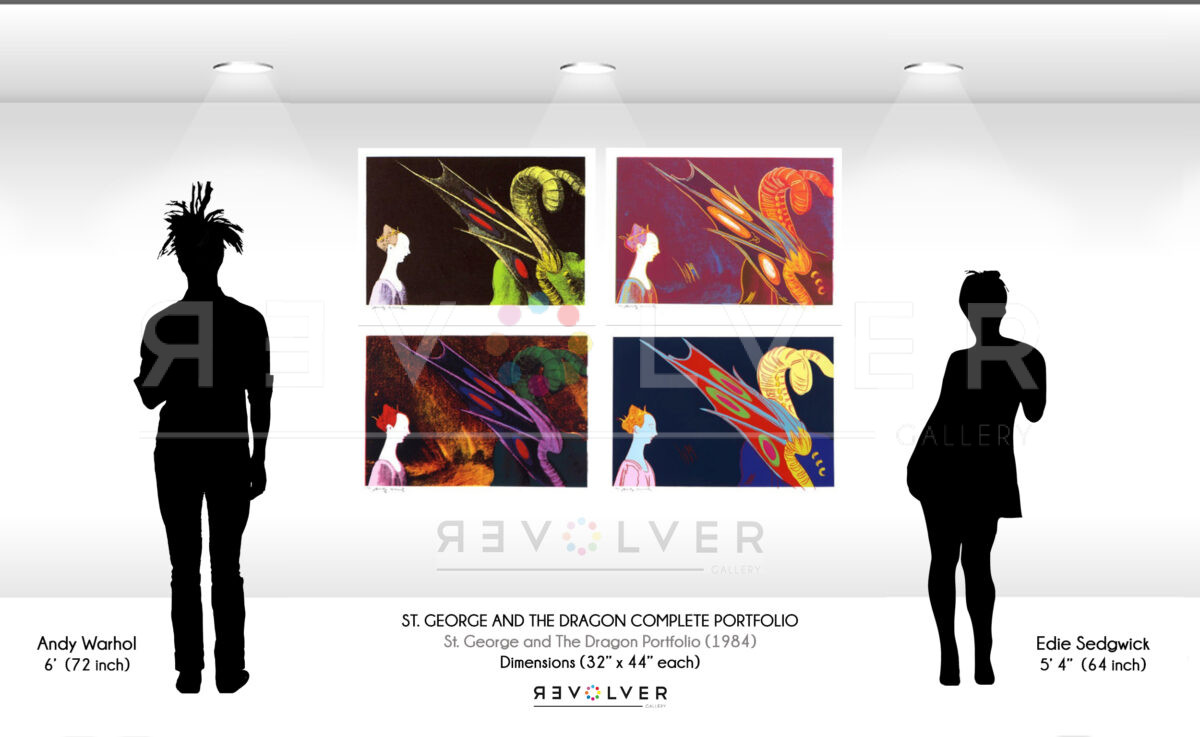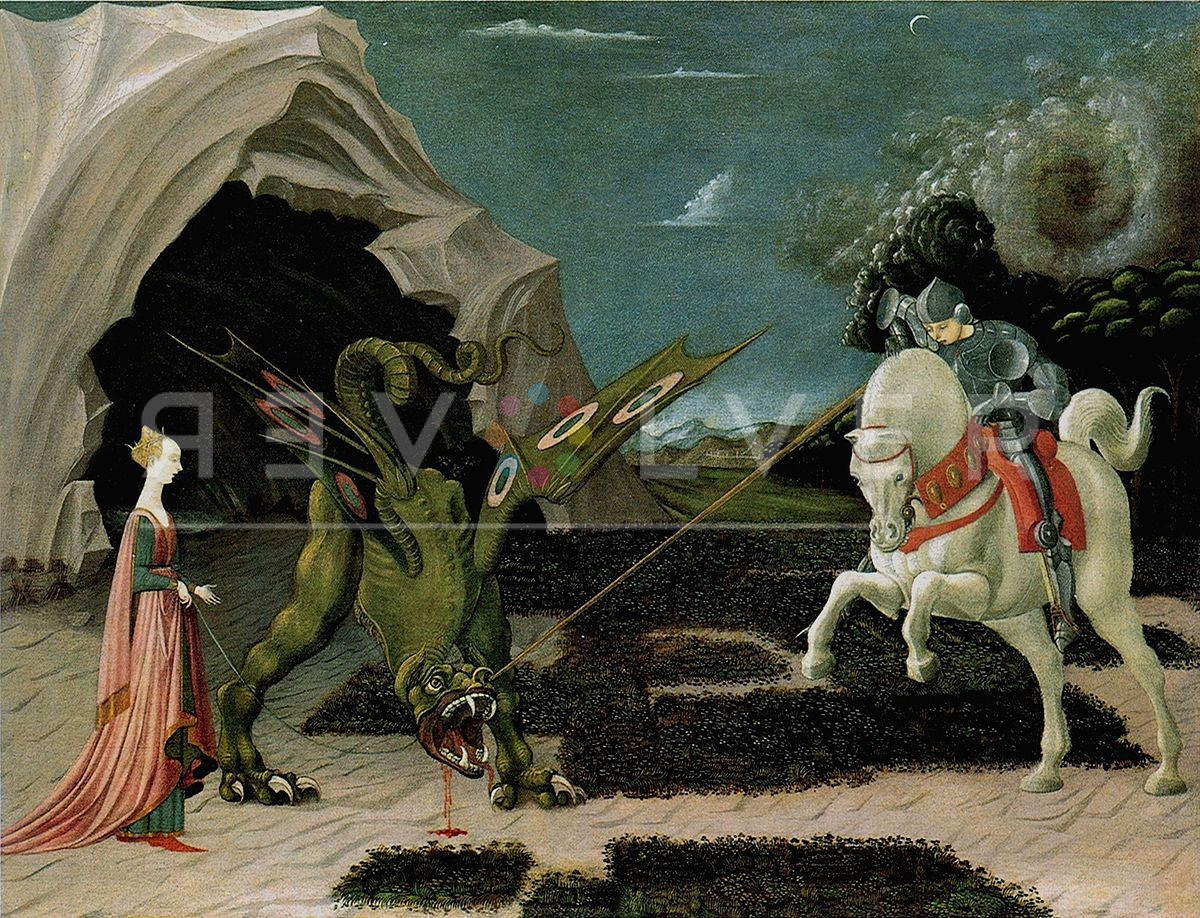Paolo Uccello, St. George and the Dragon by Andy Warhol is a portfolio of four prints published in 1984. Warhol’s interpretation of Paolo Uccello’s masterwork exemplifies the innovative fusion of classic art with modern Pop sensibilities. Similarly to other works in his “Details of Renaissance Paintings” series, Warhol’s rendition isolates and magnifies specific elements of the artist’s work. He crops in on the damsel and the dragon in Ucello’s masterpiece, and omits the central figure of St. George. This choice shifts the narrative from the saint’s valor to a more ambiguous interaction between the maiden and the beast, perhaps reflecting on the nature of fear and beauty.
In Warhol’s screenprints, the damsel is presented in profile, her expression contemplative, as she gazes upon the dragon’s hindquarters and wing. The exclusion of St. George and the spear, a symbol of divine intervention in Uccello’s original, invites viewers to interpret the scene without the lens of religious triumph. Warhol’s use of vibrant, almost neon colors, contrasts sharply with the muted, earthy tones of the Renaissance palette, bringing a contemporary edge to the medieval legend. The dragon’s wing and the damsel’s figure ‘pop’ against the dark backdrop, a testament to Warhol’s skill in drawing the viewer’s eye to the interplay of color and form.
By cropping and altering the composition, Warhol not only updates the artwork but also comments on the nature of storytelling and representation. His version strips the narrative to its core elements, allowing the subjects to stand alone, devoid of context, much like modern celebrities or consumer goods. This approach is quintessentially Warhol—a blend of historical reverence and contemporary critique, making the piece a standout addition to any collection that values the intersection of past and present.
Photo credit: Artwork that inspired Warhol by Paolo Uccello titled St. George and the Dragon, c. 1470. Courtesy of the National Gallery in London.

